I have a function which looks like: g(x) = f(x) - a^b / f(x)^b
g(x) - known function, data vector provided.
f(x) - hidden process.
a,b - parameters of this function.
From the above we get the relation:
f(x) = inverse(g(x))
My goal is to optimize parameters a and b such that f(x) would be as close as possible
to a normal distribution. If we look on a f(x) Q-Q normal plot (attached), my purpose is to minimize the distance between f(x) to the straight line which represents the normal distribution, by optimizing parameters a and b.
I wrote the below code:
g_fun <- function(x) {x - a^b/x^b}
inverse = function (f, lower = 0, upper = 2000) {
function (y) uniroot((function (x) f(x) - y), lower = lower, upper = upper)[1]
}
f_func = inverse(function(x) g_fun(x))
enter code here
# let's made up an example
# g(x) values are known
g <- c(-0.016339, 0.029646, -0.0255258, 0.003352, -0.053258, -0.018971, 0.005172,
0.067114, 0.026415, 0.051062)
# Calculate f(x) by using the inverse of g(x), when a=a0 and b=b0
for (i in 1:10) {
f[i] <- f_fun(g[i])
}
I have two question:
- How to pass parameters a and b to the functions?
- How to perform this optimization task, meaning find a and b such that f(x) would approximate normal distribution.
